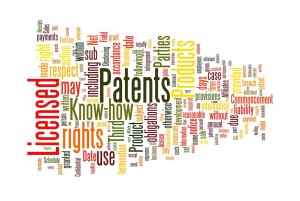An upcoming major change in the European IPRs protection system, as UPCA (Unitary Patent Court Agreement) ratification process seems in its very last mile
It’s almost ten years now that the EU Parliament passed the two basic regulations (Reg. nos. 1257/2012 and 1260/2012[1]) establishing a unionist patent system. The idea was simple – to fill a major gap existing in the EU in respect of the intellectual property rights (IPRs) protection. Inventors, in fact, had no access to a single EU instrument (a patent) designed to protect them – unlike trademarks, and industrial designs owners, in particular, who could rely respectively on Reg. nos. 40/1994, and 6/2002. Also, geographic indications were granted a (partial) protection. Something similar was provided by the European Munich 1973 Convention (EPC / CBE)[2], and by the international patent system based on the Washington 1970 Patent Cooperation Treaty (PCT )[3] but both had nothing to do with the EU, except an overlap in participating countries.
The simplest the idea, the most complicated the path. Initially, it was envisaged that the same EU could accede the EPC (this has not happened yet); so, a sensible issue relating to the EU and EPO (the organization governing the EPC) arose. An apparently trivial issue, however, turned out to be the real obstacle: translations. According to the initial projects, an application for an ECP patent would have been made in all the official EU languages – and this could hardly be manageable.
Eventually, in 2012 EU opted for creating a Unitary Patent system in conjunction with the EPO, and a relevant specialized court (the so called “EU Patent Package”) namely-
-
by adopting the two above-mentioned regulations nos. 1257 and 1260/2012;
-
and by promoting the adhesion to of an international convention (“Agreement on a Unified Patent Court” – UPCA, made in Brussels on Feb 19, 2013[4]) establishing a Unified Patent Court with central divisions in Paris (FR) and Munich (DE) and local divisions in any other EC State satisfying certain cases frequency parameters[5]. An appeal court will be based in Luxembourg.
As of today, in order to start being implemented the whole package just needs Germany to ratify the UPCA (effectiveness of the two regulations was in fact conditional upon UPCA entry into force). Reportedly, it will be matter of months since Germany is finalizing the process, and the Agreement is to enter into force the first day of the fourth month following said ratification; therefore, “the new system may be expected to start operating in late 2022 or early 2023” as EU Commission official sources say.
A Protocol of Provisional Application has already entered into force on Jan 19, 2022, and the preparatory period has begun. In addition, EPO has declared that they are going to accept Unitary Patent requests immediately after Germany deposit its ratification, i.e. before the full UPC agreement comes formally into force.
It should not be forgotten that, in the course of the process, the UK (which ratified the UPCA in April 2018) has left the EU (and lost the chance to have a section of the central division of the Unified Patent Court in London, as originally designated) .
These are the main traits of the new system:
-
the Unitary Patent will be a brand-new legal instrument to grant an inventor a patent protection having effect all over the EU States that agreed to take part of the Unitary Patent scheme (presently they are 24[6]), and to unify jurisdiction of relevant disputes with a single court
-
the new system is intended to flank, rather than substituting the existing protections (based on either domestic patent system, for those interest to have protection in individual States; and the ‘classical’ European patens based on 1973 EPC);
-
The pre-grant phase of an EU Unitary Patent will build on the EPC: i.e. nothing changes in respect of classical European patents as far as application and examination are concerned. In other words, EPO acts as a one-stop-shop. It is once a patent is granted that the interested party may opt for having the patent granted “unitary effects”. This will greatly reduce paperwork and costs in comparison with the present validation EPC system.
-
The official languages shall be English, French and German. Some facilitation in terms of contribution to translation costs will be granted to EU-based SMEs, natural persons, non-profit organizations, universities and public research organizations which desire to make an application in a language other than English, French and German.
-
During an initial transition period (6 to 12 years), if the patent is granted in German or French a (not legally binding) translation in English is to be provided by the patent holder. If the patent is granted in English, the translation must be any other official language of the EU at the choice of the patent holder. After the transitional period no translations will be required.
-
Application and renewal fees are designed to be attractive, and simple in structure.
-
The Unified Patent Court will have exclusive jurisdiction (with some initial exceptions) in the contracting member States – please consider that at present not all the EU States have adhered to the UPCA – on disputes relating to the Unitary patents, but also on classical ECP Patents.
-
Any drawbacks? – novelty of the instrument apart, the major drawback of a Unitary Patent – from a, say, strategical POW – is inevitably connected to its very nature: if it is invalidated, it will fall all across the EU. On the contrary, a ‘classical’ CBE patent can suffer a similar fate in case of successful opposition (in respect of the designated States only, though); otherwise, it will fall just in the specific State where a successful judicial challenge has been put forwards.
[1] Regulation (EU) No 1257/2012 of the European Parliament and of the Council of 17 December 2012 implementing enhanced cooperation in the area of the creation of unitary patent protection (OJ L 361, 31.12.2012, p. 1–8) and Council Regulation (EU) No 1260/2012 of 17 December 2012 implementing enhanced cooperation in the area of the creation of unitary patent protection with regard to the applicable translation arrangements (OJ L 361, 31.12.2012, p. 89–92).
[2] Convention on The Grant of European Patents (European Patent Convention) of 5 October 1973. A revised version of the European Patent Convention entered into force on 13 December 2007. There are presently 38 member States (alle the 27 EU States plus Albania, Switzerland, United Kingdom, Iceland, Liechtenstein, Monaco, North Macedonia, Norway, Serbia, San Marino, and Turkey.
[3] Patent Cooperation Treaty (PCT), done at Washington on June 19, 1970, amended on September 28, 1979,
modified on February 3, 1984, and on October 3, 2001.
[4] OJ C 175, 20.6.2013, p. 1–40.
[5] Presently, local divisions result established in Vienna (AT, Brussels (BE), Copenhagen (DK), Helsinki (FI), Budapest (HU), Milan (IT), Luxemburg (LU), The Hague (NL), Lisbon (PT), Ljubljana (SI), Stockholm (SE). Other will likely follow.
[6] Austria, Belgium, Bulgaria, Cyprus, Czechia, Denmark, Estonia, Finland, France, Germany, Greece, Hungary, Ireland, Italy, Latvia, Lithuania, Luxembourg, Malta, Netherlands, Portugal, Romania, Slovakia, Slovenia, Sweden.













